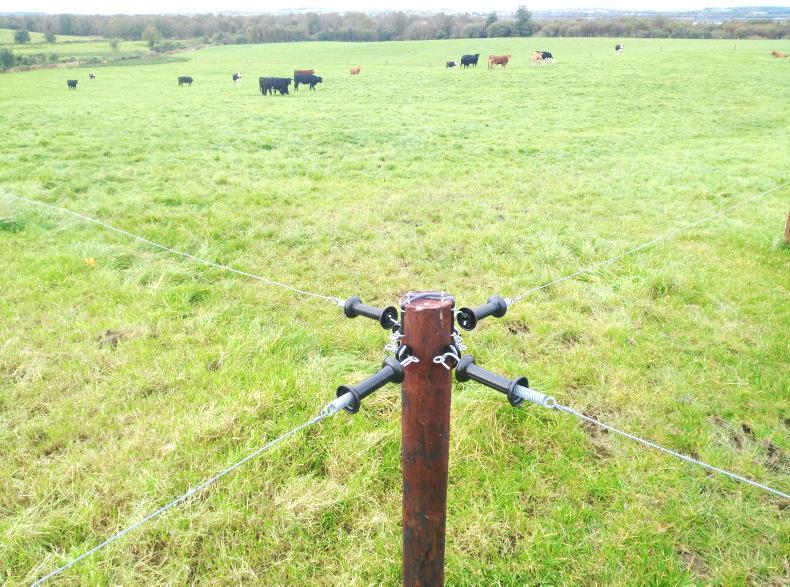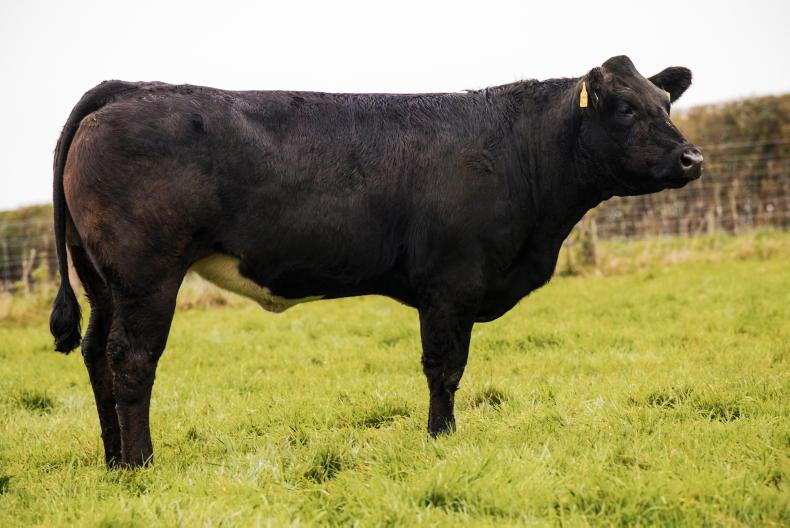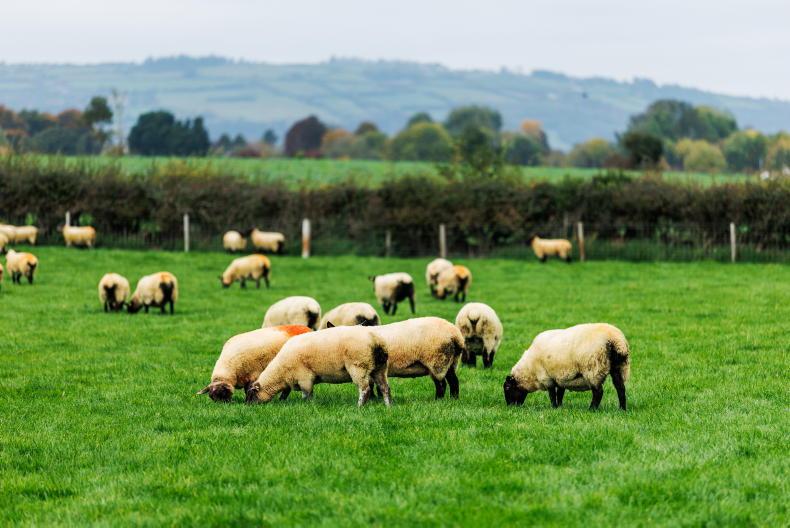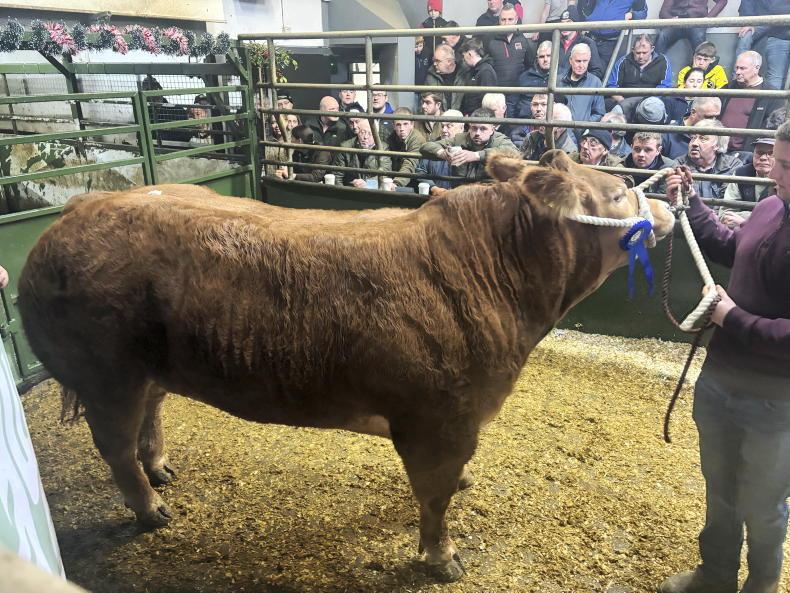Grass growth on our measuring farms this week was 27kg DM/ha/day. High soil temperatures and lots of sunlight are driving growth, which remains at unprecedented levels for early November.
Most of our farmers are easily hitting their grazing targets, given the dry weather conditions – 60% of your grazing block should be grazed and closed up for the winter at this point. Indeed, the good conditions are set to continue.

The forecast remains dry until next Wednesday, when around 10mm is set to fall in the south and east of the country and 20mm due in the south.
It’s predicted that the north will escape the vast majority of this moisture and remain dry well into November.
At this point, a farm housing on 1 November and targeting early grass in the spring should have about 18 grazing days’ worth of grass.
There is not one grass-based beef farm in the country that shouldn’t be trying to get stock out early in the spring. Remember, early grazing does not mean flinging open the shed gates.
It means taking baby steps with light stock and taking things day-by-day, as ground conditions allow.
Spring grass
Cattle are better off outside in the spring, both from an animal health and an
economic point of view. But, the grass must be there for them.
Bare paddocks around the yard filled with ring-feeders might be good for the health of young calves, but it means that diets are still silage-based and often leads to severe poaching.
In brief
Grass growth 27kg DM/ha/day.60% of grazing ground should be closed up at this point.Weather to remain good until next Wednesday.Target 18 grazing days on farm this week.Billy Gilmore
Co Galway
Land type - mixed
Half of the cattle here are housed at this point. The replacement weanlings for the Newford herd and some cows with young calves at foot remain outdoors. These Newford heifers are around 220kg, which is slightly ahead of target for this point in their development.
Their older comrades are indoors on good-quality silage alone currently, and will remain so for the winter.
Outdoors, ground conditions remain good, which is facilitating good grazing residuals.
At this point, 40% of the farm is closed up for the winter. I know that the target for the first week in November is to have 60% closed up, but things are different on a mixed beef and sheep farm. I won’t have the farm completely closed until 1 January – I have ewes to feed between now and then!
My ewes were dosed for fluke last week. Housed cattle will be clipped and treated for all stages of fluke, as well as lice, in a fortnight’s time.
William Treacy
Co Louth
Land type - dry
We had our first frost of the year on Wednesday morning. The weather may have become noticeably colder, but I’ll take that ahead of rain!
Our autumn-grazing planner is on target: 60% of the farm is closed up for the winter at this point. However, grass supply has fallen off a cliff and, at 470kg DM/ha, my farm cover is well back on where is needs to be. I recorded growth of 20kg DM/ha/day this week, which is half of my daily demand.
Around a third of the stock is indoors at the moment, but these are mostly finishing stock – beef heifers and autumn-born bulls – that would be in anyway. They were out for a TB test last week, and I was thrilled with how they looked, particularly the heifers. However, I’m due to weigh them next week, which will tell me all I need to know. The scales doesn’t lie.
I have 50 spring cows weaned and 20 left to wean. I put cows and calves in adjacent paddocks when weaning. This minimizes stress on both beasts.
James Madigan
Co Kilkenny
Land type - dry
As of this week, 60% of the farm is closed for the winter. I have focused on closing up land around the yard early, which will mean I can turn spring-calvers straight to grass in February.
Elsewhere, the driest paddocks were closed up first so as to facilitate early spring grazing for my beef cattle.
My spring-born bulls averaged 373kg as a group at weighing three weeks ago. I’m delighted with this performance, as they’re ahead of targets for the under-16-month bull system. They remain outdoors and are receiving a couple of kilogrammes of meals daily. I’ll house them in two weeks’ time. At the same time, my dry cows and autumn-calvers will hit the sheds too.
Spring-calving cows have been vaccinated for salmonella and leptospirosis in recent days, and all young stock will be treated for lice, worms and fluke as they come indoors.
My silage test results are relatively good. First- and second-cut came back at 70% and 69% DMD respectively. Paddocks taken out for bales averaged 71% DMD.
Niall Patterson
Co Leitrim
Land type - heavy
The last of our stock was housed on Monday; dry cows running rough ground on an outfarm were brought home. To be honest, I would’ve left them where they were, only for the time change. I don’t get a chance to check them in the mornings and don’t fancy going out in the dark after work.
For a change, the weather has been kind to us in recent weeks. I won’t say ground is dry, but it’s manageable. The good spell is coming far too late for me, however.
Some of my weanlings are back 30kg on last year. We were forced to house frequently during the so-called summer. The muggy weather paved the way for an outbreak of pneumonia, which didn’t help either. I lost an animal and was forced to vaccinate everything.
To compound the situation, prices are back in the marts. I sold a top-quality Blue bull last week – 365kg for €900. The same animal would’ve made €1,150 in 2015. It seems the pull of the Belgian Blue just isn’t there anymore. I’m planning on using more Limousin and Charolais next year.
Read more
Grass+ dairy: superb autumn but don't forget grass next spring
Grass growth on our measuring farms this week was 27kg DM/ha/day. High soil temperatures and lots of sunlight are driving growth, which remains at unprecedented levels for early November.
Most of our farmers are easily hitting their grazing targets, given the dry weather conditions – 60% of your grazing block should be grazed and closed up for the winter at this point. Indeed, the good conditions are set to continue.

The forecast remains dry until next Wednesday, when around 10mm is set to fall in the south and east of the country and 20mm due in the south.
It’s predicted that the north will escape the vast majority of this moisture and remain dry well into November.
At this point, a farm housing on 1 November and targeting early grass in the spring should have about 18 grazing days’ worth of grass.
There is not one grass-based beef farm in the country that shouldn’t be trying to get stock out early in the spring. Remember, early grazing does not mean flinging open the shed gates.
It means taking baby steps with light stock and taking things day-by-day, as ground conditions allow.
Spring grass
Cattle are better off outside in the spring, both from an animal health and an
economic point of view. But, the grass must be there for them.
Bare paddocks around the yard filled with ring-feeders might be good for the health of young calves, but it means that diets are still silage-based and often leads to severe poaching.
In brief
Grass growth 27kg DM/ha/day.60% of grazing ground should be closed up at this point.Weather to remain good until next Wednesday.Target 18 grazing days on farm this week.Billy Gilmore
Co Galway
Land type - mixed
Half of the cattle here are housed at this point. The replacement weanlings for the Newford herd and some cows with young calves at foot remain outdoors. These Newford heifers are around 220kg, which is slightly ahead of target for this point in their development.
Their older comrades are indoors on good-quality silage alone currently, and will remain so for the winter.
Outdoors, ground conditions remain good, which is facilitating good grazing residuals.
At this point, 40% of the farm is closed up for the winter. I know that the target for the first week in November is to have 60% closed up, but things are different on a mixed beef and sheep farm. I won’t have the farm completely closed until 1 January – I have ewes to feed between now and then!
My ewes were dosed for fluke last week. Housed cattle will be clipped and treated for all stages of fluke, as well as lice, in a fortnight’s time.
William Treacy
Co Louth
Land type - dry
We had our first frost of the year on Wednesday morning. The weather may have become noticeably colder, but I’ll take that ahead of rain!
Our autumn-grazing planner is on target: 60% of the farm is closed up for the winter at this point. However, grass supply has fallen off a cliff and, at 470kg DM/ha, my farm cover is well back on where is needs to be. I recorded growth of 20kg DM/ha/day this week, which is half of my daily demand.
Around a third of the stock is indoors at the moment, but these are mostly finishing stock – beef heifers and autumn-born bulls – that would be in anyway. They were out for a TB test last week, and I was thrilled with how they looked, particularly the heifers. However, I’m due to weigh them next week, which will tell me all I need to know. The scales doesn’t lie.
I have 50 spring cows weaned and 20 left to wean. I put cows and calves in adjacent paddocks when weaning. This minimizes stress on both beasts.
James Madigan
Co Kilkenny
Land type - dry
As of this week, 60% of the farm is closed for the winter. I have focused on closing up land around the yard early, which will mean I can turn spring-calvers straight to grass in February.
Elsewhere, the driest paddocks were closed up first so as to facilitate early spring grazing for my beef cattle.
My spring-born bulls averaged 373kg as a group at weighing three weeks ago. I’m delighted with this performance, as they’re ahead of targets for the under-16-month bull system. They remain outdoors and are receiving a couple of kilogrammes of meals daily. I’ll house them in two weeks’ time. At the same time, my dry cows and autumn-calvers will hit the sheds too.
Spring-calving cows have been vaccinated for salmonella and leptospirosis in recent days, and all young stock will be treated for lice, worms and fluke as they come indoors.
My silage test results are relatively good. First- and second-cut came back at 70% and 69% DMD respectively. Paddocks taken out for bales averaged 71% DMD.
Niall Patterson
Co Leitrim
Land type - heavy
The last of our stock was housed on Monday; dry cows running rough ground on an outfarm were brought home. To be honest, I would’ve left them where they were, only for the time change. I don’t get a chance to check them in the mornings and don’t fancy going out in the dark after work.
For a change, the weather has been kind to us in recent weeks. I won’t say ground is dry, but it’s manageable. The good spell is coming far too late for me, however.
Some of my weanlings are back 30kg on last year. We were forced to house frequently during the so-called summer. The muggy weather paved the way for an outbreak of pneumonia, which didn’t help either. I lost an animal and was forced to vaccinate everything.
To compound the situation, prices are back in the marts. I sold a top-quality Blue bull last week – 365kg for €900. The same animal would’ve made €1,150 in 2015. It seems the pull of the Belgian Blue just isn’t there anymore. I’m planning on using more Limousin and Charolais next year.
Read more
Grass+ dairy: superb autumn but don't forget grass next spring












SHARING OPTIONS